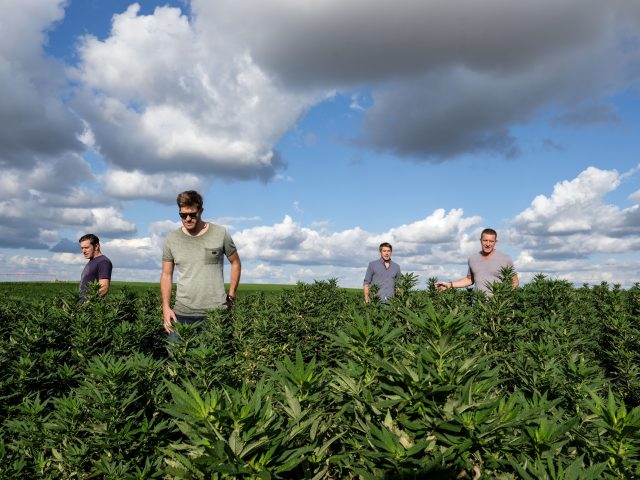Charlotte’s Web, the higher CBD, lower THC cannabis strain gained widespread attention for its potential therapeutic benefits, particularly for people suffering from epilepsy and other seizure disorders. The strain was named after a young girl named Charlotte Figi, who suffered from Dravet Syndrome, a rare and severe form of epilepsy. After trying various treatments, Charlotte’s parents discovered that a CBD-rich cannabis oil made from this strain significantly reduced the frequency and severity of her seizures.
Developed by the Stanley Brothers in Colorado, Charlotte’s Web is a crossbreed of industrial hemp and marijuana, specifically cultivated to have a high concentration of CBD (cannabidiol) and very low THC (tetrahydrocannabinol) content, typically less than 0.3%. CBD is a non-psychoactive compound, which means it does not produce the “high” associated with THC. CBD has been studied for its potential benefits in managing various medical conditions, including epilepsy, chronic pain, inflammation, anxiety, and more.
Charlotte’s Web has a subtle, earthy, and piney aroma and flavor. It’s commonly consumed as a whole-plant extract, oil, or tincture rather than smoked or vaporized like many other cannabis strains. The high CBD content and minimal THC content make it suitable for those seeking potential medical benefits with less intoxicating effects associated with high-THC strains.
It’s important to note that while anecdotal evidence and preliminary research suggest potential benefits from CBD, more clinical studies are needed to fully understand its efficacy and safety. If you’re considering using Charlotte’s Web or any CBD product, it’s essential to consult with a healthcare professional to determine if it’s appropriate for your specific situation. Also, make sure to follow your local laws and regulations regarding the use of cannabis-derived products.
Gallery: Charlotte’s Web in Time Magazine Image Gallery
WHAT IS CBDV? IS IT BETTER THAN CBD?
Cannabidiol (CBD), one of the main cannabinoids, has a non-psychoactive homolog called cannabidivarin (CBDV). It can be challenging to distinguish CBDV from CBD in lab tests because their molecular structures are similar. Herein is CBDV’s legality of CBDV, exactly how CBDV works, and whether CBDV is better than CBD.
https://glowbarldn.com/blogs/cbd-guides/what-cbdv-better#:~:text=CBDv%20is%20a%20non%2Dintoxicating,cannabinoid%20has%20a%20propyl%20chain.
This evenly balanced hybrid strain (50% indica/50% sativa) was created by crossing unspecified strains with an industrial hemp variety2. This strain gained prominence for its high medicinal value, as it was initially developed for a young girl named Charlotte Figi who had Dravet Syndrome, a rare form of epilepsy. Charlotte experienced a significant reduction in her seizure frequency when treated with a low-THC, high-CBD medical marijuana extract3.
As a result of its low THC content (0.3% or less), Charlotte’s Web does not produce an intoxicating effect1. Instead, it offers a gentle, soothing relaxation and calm. Users report a mellow sensation from beginning to end, accompanied by a sense of well-being and relaxation that can last for hours. Many find relief from aches and pains, as well as various medical conditions.
With its low THC and relatively high CBD levels (6-17%), Charlotte’s Web is a popular medicinal strain for treating chronic pain, inflammation, chronic stress or anxiety, seizures, multiple sclerosis, and fibromyalgia1. This strain features a mildly sour, citrusy flavor with hints of woody pine. Its aroma is reminiscent of earthy, woody pine, with undertones of sour citrusy lemon and a hint of sharp mint. Charlotte’s Web buds are small, minty green, and grape-shaped with orange hairs and a coating of frosty, minty white crystal trichomes.
Footnotes
- Cunha, J. M., Carlini, E. A., Pereira, A. E., Ramos, O. L., Pimentel, C., Gagliardi, R., … & Mechoulam, R. (1980). Chronic administration of cannabidiol to healthy volunteers and epileptic patients. Pharmacology, 21(3), 175-185. ↩ ↩2 ↩3
- Stanley Brothers. (n.d.). Charlotte’s Web CBD Oil. ↩
- Maa, E., & Figi, P. (2014). The case for medical marijuana in epilepsy. Epilepsia, 55(6), 783-786. ↩
